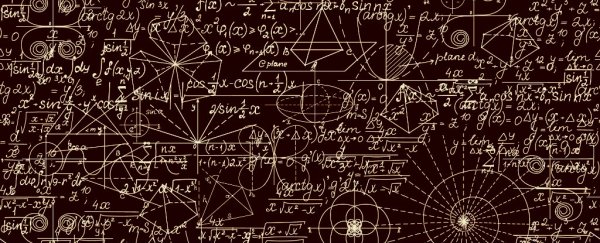It's a problem that the world's most experienced mathematicians have spent decades trying to solve, and the solution had eluded them at every turn - the infamous Gaussian correlation inequality (GCI).
Then, out of nowhere, a retired German statistician figured out the proof while hunched over the sink, cleaning his teeth. But rather than being celebrated by the wider mathematical community, the proof went largely ignored. Because how could such an unlikely figure have outsmarted them all?
"I know of people who worked on it for 40 years," Donald Richards, a statistician from Pennsylvania State University, told Natalie Wolchover at Quanta Magazine. "I myself worked on it for 30 years."
First proposed in the 1950s, but properly formulated in 1972, the GCI principle sounds relatively simple:
If two shapes overlap, such as a rectangle and a circle, the probability of hitting one of those overlapping shapes - say, with a dart - increases the chances of also hitting the other.
Imagine it like this - you've got a blue rectangle and a yellow circle, and you place one on top of the other, and mark a target in the centre like a dart board.
You throw a bunch of darts at the target, and you'll soon discover that a bell curve - or 'Gaussian distribution' - of positions has formed around the centre, with vast majority of the darts sitting in the overlap.
But it's not just any old vast majority - it's a specific majority that is directly proportional to the number of darts outside the overlapped shapes.
The Gaussian correlation inequality states that the odds of the dart hitting the combined circle and rectangle are always as high as or higher than the probability of it landing inside the rectangle multiplied by the probability of it landing inside the circle.
That might seem like common sense, but try proving it mathematically.
"Being an arrogant young mathematician … I was shocked that grown men who were putting themselves off as respectable math and science people didn't know the answer to this," Loren Pitt, a mathematician from the University of Virginia, told Quanta Magazine about the time he first encountered the problem in 1973.
"Fifty years or so later, I still didn't know the answer," he said.
Fast-forward to 17 July 2014, and retired German statistician, Thomas Royen, says he figured out how to prove the GCI principle while bushing his teeth.
"On the morning of the 17th, he saw how to calculate a key derivative for this extended GCI that unlocked the proof," says Wolchover at Quanta.
He didn't know how to use LaTeX - a word processor that's generally used by mathematicians - so wrote everything out in Word, and posted his proof to the pre-print website, arXiv.org.
He sent it to Richards at Penn State, who says he instantly knew that it had been solved.
The rest of the mathematics community was another story.
Thanks to the number of false proofs that had been put out there for the GCI principle over the years, the community had become jaded.
According to Wolchover, Royen's proof was sent to Bo'az Klartag from the Weizmann Institute of Science and Tel Aviv University in Israel in 2015, along with two other "proofs".
The first proof Klartag read had an error, and he pushed Royen's and the third proof aside, and they were soon forgotten.
Royen wasn't fased, and chose to get his proof out there the only way he knew how - in an obscure journal called the Far East Journal of Theoretical Statistics, where he'd been sitting on the editorial board for the past 12 months.
This obvious bias didn't go down well with the rest of the mathematics community, but Royen wasn't particularly troubled.
"I am used to being frequently ignored by scientists from [top-tier] German universities," he told Wolchover. "I am not so talented for 'networking' and many contacts. I do not need these things for the quality of my life."
Fortunately, two of the people Royen had convinced were Polish mathematician Rafał Latała and his student Dariusz Matlak, who wrote up their own version of Royen's proof and posted it to arXiv.og in late 2015.
As they explained in the abstract:
"The aim of this note is to present in a self contained way the beautiful proof of the Gaussian correlation inequality, due to Thomas Royen. Although the method is rather simple and elementary, we found the original paper not too easy to follow. …
We decided to reorganise a bit Royen's proof, restrict it only to the Gaussian case, and add some missing details. We hope that this way a wider readership may appreciate the remarkable result of Royen."
Thanks to this new paper, people started to take notice, and over the past 12 months, word finally circulated throughout the mathematics community that Royen's proof was the real deal.
There are still some auxiliary questions that need to be answered following this proof, but perhaps the biggest question of them all is, how, in the age of the Internet, did everyone miss this?
"It was clearly a lack of communication in an age where it's very easy to communicate," Klartag told Quanta Magazine.
"But anyway, at least we found it - [and] it's beautiful."
